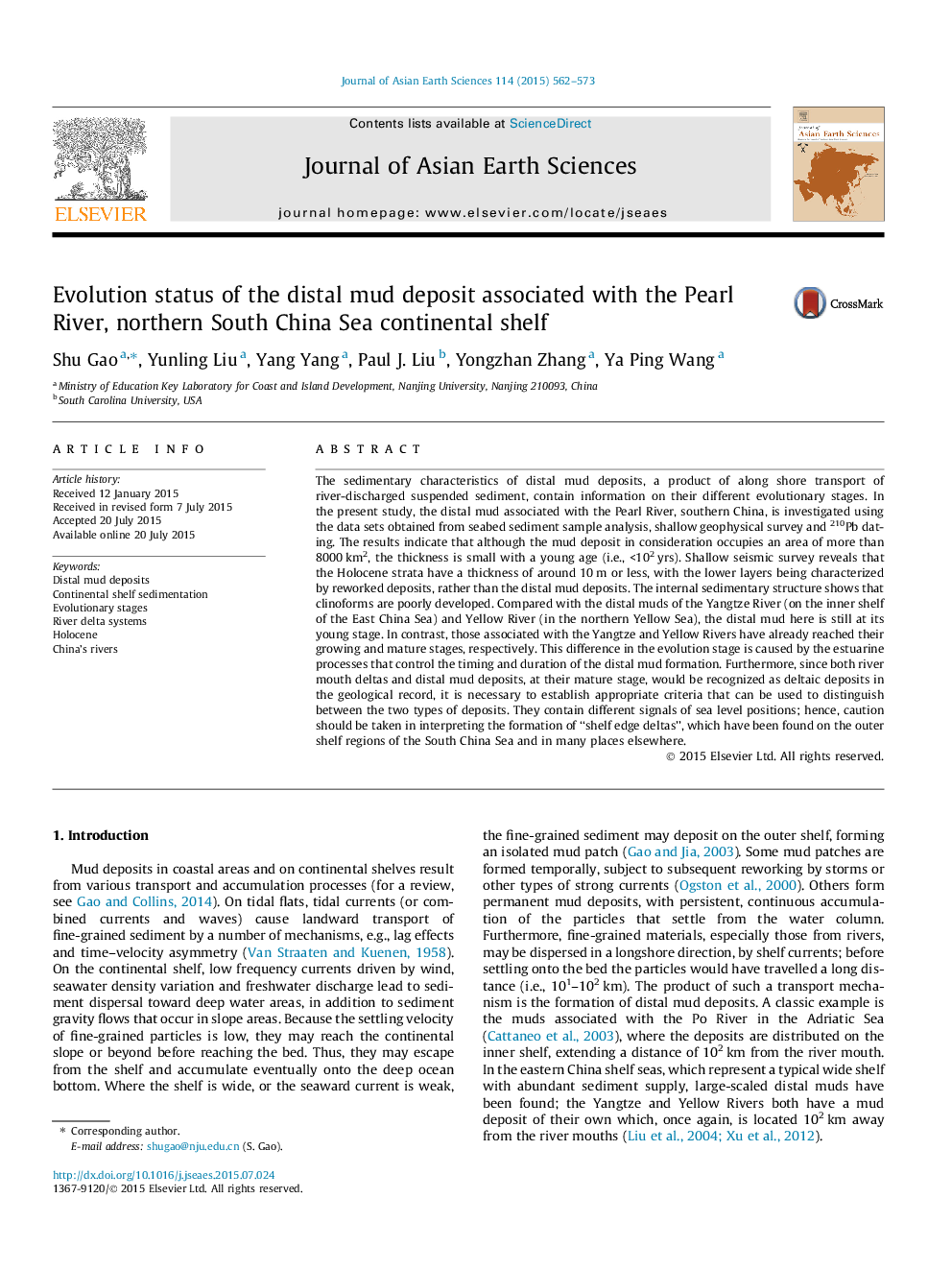| کد مقاله | کد نشریه | سال انتشار | مقاله انگلیسی | نسخه تمام متن |
|---|---|---|---|---|
| 4730162 | 1356739 | 2015 | 12 صفحه PDF | دانلود رایگان |
• The distal mud of the Pearl River occupies a large area, with a small thickness.
• Evolutionary stages of Holocene distal mud deposits can be identified using clinoform morphology.
• Appropriate criteria should be established to distinguish between subaqueous deltas and distal mud deposits.
The sedimentary characteristics of distal mud deposits, a product of along shore transport of river-discharged suspended sediment, contain information on their different evolutionary stages. In the present study, the distal mud associated with the Pearl River, southern China, is investigated using the data sets obtained from seabed sediment sample analysis, shallow geophysical survey and 210Pb dating. The results indicate that although the mud deposit in consideration occupies an area of more than 8000 km2, the thickness is small with a young age (i.e., <102 yrs). Shallow seismic survey reveals that the Holocene strata have a thickness of around 10 m or less, with the lower layers being characterized by reworked deposits, rather than the distal mud deposits. The internal sedimentary structure shows that clinoforms are poorly developed. Compared with the distal muds of the Yangtze River (on the inner shelf of the East China Sea) and Yellow River (in the northern Yellow Sea), the distal mud here is still at its young stage. In contrast, those associated with the Yangtze and Yellow Rivers have already reached their growing and mature stages, respectively. This difference in the evolution stage is caused by the estuarine processes that control the timing and duration of the distal mud formation. Furthermore, since both river mouth deltas and distal mud deposits, at their mature stage, would be recognized as deltaic deposits in the geological record, it is necessary to establish appropriate criteria that can be used to distinguish between the two types of deposits. They contain different signals of sea level positions; hence, caution should be taken in interpreting the formation of “shelf edge deltas”, which have been found on the outer shelf regions of the South China Sea and in many places elsewhere.
Journal: Journal of Asian Earth Sciences - Volume 114, Part 3, 15 December 2015, Pages 562–573
